


1845
George Scrimshaw and possibly wife Margaret and son Thomas





|
The Samuel Boddington was a barque, sheathed in felt and yellow metal and weighed 523 tons. It was built in 1841 in Whitby. It made the one voyage to Tasmania. It had male convicts on board. The captain was Naylor. It departed from Kingston, Ireland, on 23 September 1845, passed the Cape of Good Hope on December 14th, and arrived in Hobart, Tasmania, on 18 January 1846. One hundred and forty-three convicts landed in Hobart, including two boys. The ship also carried two officers and fifty-one rank and file of the 65th Regiment. George Scrimshaw was among the rank and file. Included among the passengers were nine women and ten children. It is possible that George's wife, Margaret Scrimshaw nee Cox, and son, Thomas Alfred Scrimshaw, were among the women and children. Thomas was not born before the voyage began, but it is not impossible that he was born during the voyage out. |
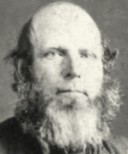 George Scrimshaw |
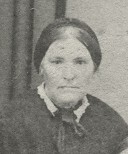 Margaret Scrimshaw |

| The port of Kingston in Ireland, from where the Samuel Boddington left, is now known as Dún Laoghaire. Dún Laoghaire is a city in eastern Ireland, in county Dublin, a seaport on Dublin Bay, south of the city of Dublin. Dún Laoghaire was a fishing village before its harbour was constructed between 1817 and 1859. The harbour covers about 100 hectares (about 250 acres) and varies in depth from 3 to 9 metres (from 10 to 30 feet) according to the tide. At one time cattle, lead ore, and granite were exported and coal, iron, timber, corn, and foodstuffs were imported. The city is now a resort and yachting and fishing center, and the harbor is used for cross-channel passenger, mail, and car ferry service. The town was originally built as a fortress by Laoghaire, a king of Ireland in the 5th century AD. The town received the name of Kingston in 1821 in honor of a visit by King George IV of Britain. Before that the English called it Dunleary. Some people spell it without a space between the two words, Dunlaoghaire. In 1922 the town resumed using its Irish name. |
 Kingston, Ireland |
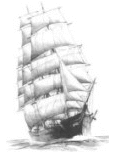
|
 Hobart, Tasmania |


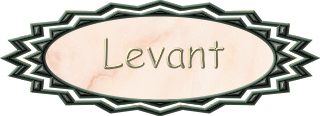

 Sydney, Australia |

|
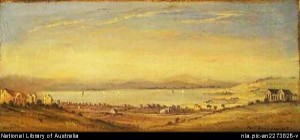 Wellington, New Zealand |
| The Levant was often used for whaling. However, this barque left Sydney on 9th July 1846 for Wellington's Port Nicholson. It arrived on 22nd July 1846. The captain was Lane and the ship's doctor was Doctor Knox. The ship weighed 390 tons. Apart from two Captains and two Lieutenants and a number of others associated with the Regiments, it carried eight sergeants, seven corporals, and one hundred and sixty-two rank and file of the 58th and 65th Regiments. George Scrimshaw was among these, been sent to the Hutt Valley because of land tension between Maori and Pakeha. It is possible that George's wife, Margaret Scrimshaw nee Cox, and son, Thomas Alfred Scrimshaw, were among the twenty-four women and thirty-two children who travelled with them. |

 |
The New Zealand Spectator of 25 July 1846, gave a list of supplies brought in the Levant's cargo. |

 |
Return to Scrimshaw page Return to Cox page |